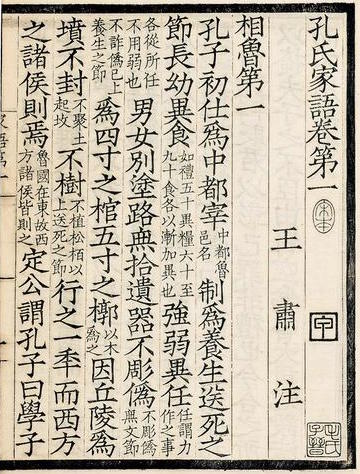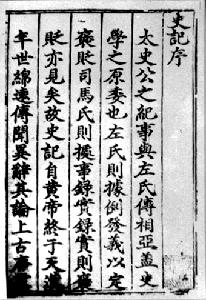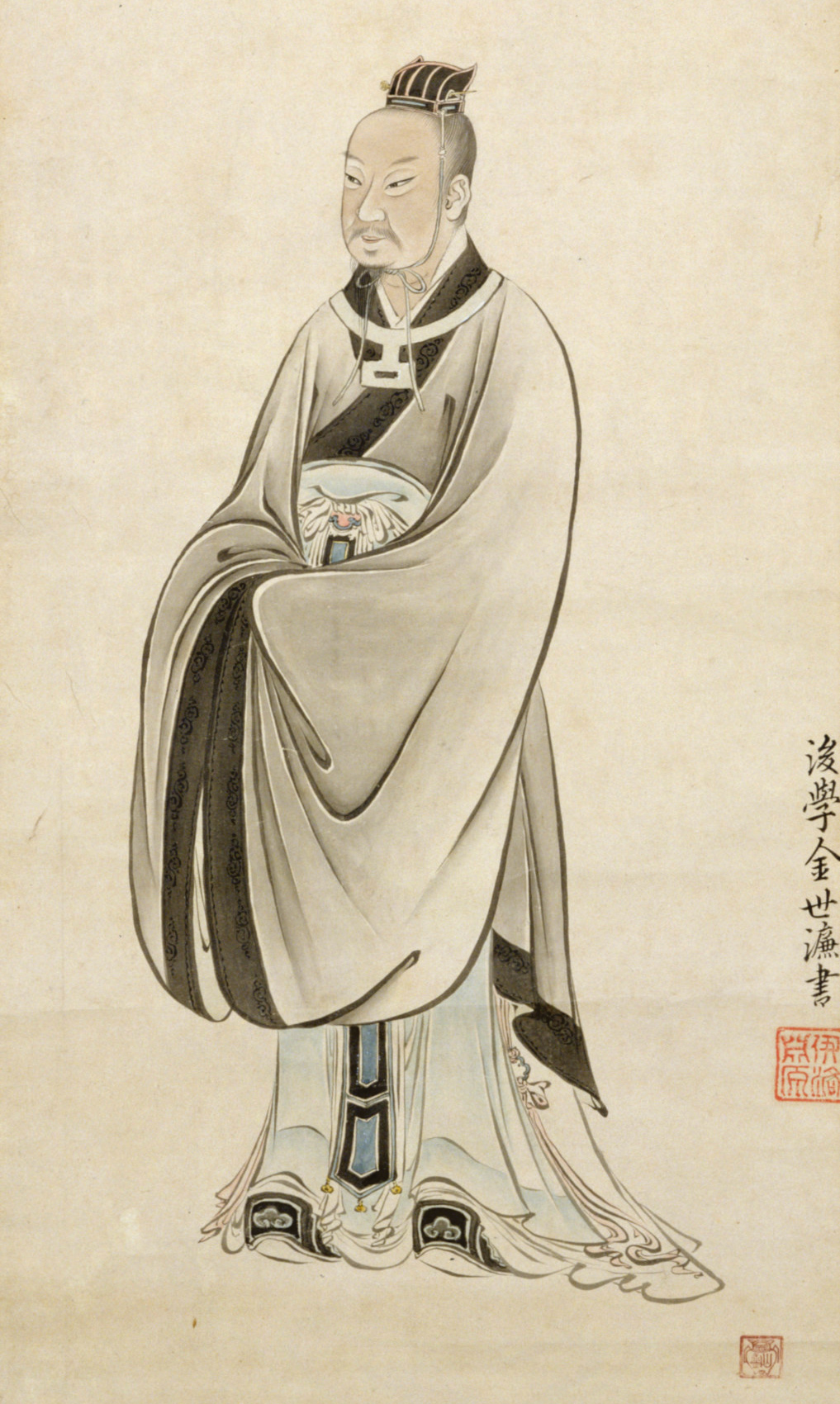|
Kongzi Jiayu
The ''Kongzi Jiayu'' (), translated as ''The School Sayings of Confucius'' or ''Family Sayings of Confucius'', is a collection of sayings of Confucius (Kongzi), written as a supplement to the '' Analects'' (''Lunyu''). A book by the title had existed since at least the early Han dynasty (206 BC – 220 AD), and was listed in the 1st-century imperial bibliography '' Yiwenzhi'' with 27 scrolls. The extant version, however, was compiled by the Cao Wei official-scholar Wang Su (195–256 AD), and contains 10 scrolls and 44 sections. Chinese scholars had long concluded that the received text was a 3rd-century forgery by Wang Su that had nothing to do with the original text of the same title, but this verdict has been overturned by archaeological discoveries of Western Han dynasty tombs at Dingzhou (55 BC) and Shuanggudui (165 BC). Contents In the postface to the ''Kongzi Jiayu'', its author describes the collection as discussions Confucius had with his disciples and others, reco ... [...More Info...] [...Related Items...] OR: [Wikipedia] [Google] [Baidu] |
Kong Anguo
Kong Anguo (; ca. 156 – ca. 74 BC), courtesy name Ziguo (), was a Confucian scholar and government official of the Western Han dynasty of ancient China. A descendant of Confucius, he wrote the ''Shangshu Kongshi Zhuan'', a compilation and commentary of the "Old Text" '' Shangshu''. His work was lost, but a fourth-century forgery was officially recognized as a Confucian classic for over a millennium. Background Kong Anguo was a native of Qufu in Lu, one of the many semi-autonomous kingdoms of the Western Han dynasty. He was the second son of Kong Zhong () and an eleventh-generation descendant of Confucius. He studied the ''Classic of Poetry'' and '' Shangshu'' (''Book of Documents'') from the famous Confucian scholars Shen Pei and Fu Sheng. Kong also served in the court of Emperor Wu of Han as the Grand Master of Remonstrance (). Old Text ''Shangshu'' According to tradition, the local ruler Prince Gong of Lu demolished a building of the Kong family complex in the process o ... [...More Info...] [...Related Items...] OR: [Wikipedia] [Google] [Baidu] |
Book Of Rites
The ''Book of Rites'', also known as the ''Liji'', is a collection of texts describing the social forms, administration, and ceremonial rites of the Zhou dynasty as they were understood in the Warring States and the early Han periods. The ''Book of Rites'', along with the ''Rites of Zhou'' (''Zhōulǐ'') and the '' Book of Etiquette and Rites'' (''Yílǐ''), which are together known as the "Three Li (''Sānlǐ'')," constitute the ritual ('' lǐ'') section of the Five Classics which lay at the core of the traditional Confucian canon (each of the "five" classics is a group of works rather than a single text). As a core text of the Confucian canon, it is also known as the ''Classic of Rites'' or ''Lijing'', which some scholars believe was the original title before it was changed by Dai Sheng. History The ''Book of Rites'' is a diverse collection of texts of uncertain origin and date that lacks the overall structure found in the other "rites" texts (the ''Rites of Zhou'' and the ... [...More Info...] [...Related Items...] OR: [Wikipedia] [Google] [Baidu] |
Zhu Xi
Zhu Xi (; ; October 18, 1130 – April 23, 1200), formerly romanized Chu Hsi, was a Chinese calligrapher, historian, philosopher, poet, and politician during the Song dynasty. Zhu was influential in the development of Neo-Confucianism. He contributed greatly to Chinese philosophy and fundamentally reshaped the Chinese worldview. His works include his editing of and commentaries to the Four Books (which later formed the curriculum of the civil service exam in Imperial China from 1313 to 1905), his writings on the process of the "investigation of things" (), and his development of meditation as a method for self-cultivation. He was a scholar with a wide learning in the classics, commentaries, histories and other writings of his predecessors. In his lifetime he was able to serve multiple times as a government official, although he avoided public office for most of his adult life. He also wrote, compiled and edited almost a hundred books and corresponded with dozens of other sc ... [...More Info...] [...Related Items...] OR: [Wikipedia] [Google] [Baidu] |
Shiji
''Records of the Grand Historian'', also known by its Chinese name ''Shiji'', is a monumental history of China that is the first of China's 24 dynastic histories. The ''Records'' was written in the early 1st century by the ancient Chinese historian Sima Qian, whose father Sima Tan had begun it several decades earlier. The work covers a 2,500-year period from the age of the legendary Yellow Emperor to the reign of Emperor Wu of Han in the author's own time, and describes the world as it was known to the Chinese of the Western Han dynasty. The ''Records'' has been called a "foundational text in Chinese civilization". After Confucius and the First Emperor of Qin, "Sima Qian was one of the creators of Imperial China, not least because by providing definitive biographies, he virtually created the two earlier figures." The ''Records'' set the model for all subsequent dynastic histories of China. In contrast to Western historical works, the ''Records'' do not treat history as "a ... [...More Info...] [...Related Items...] OR: [Wikipedia] [Google] [Baidu] |
Sima Qian
Sima Qian (; ; ) was a Chinese historian of the early Han dynasty (206AD220). He is considered the father of Chinese historiography for his '' Records of the Grand Historian'', a general history of China covering more than two thousand years beginning from the rise of the legendary Yellow Emperor and the formation of the first Chinese polity to the reigning sovereign of Sima Qian's time, Emperor Wu of Han. As the first universal history of the world as it was known to the ancient Chinese, the ''Records of the Grand Historian'' served as a model for official history-writing for subsequent Chinese dynasties and the Chinese cultural sphere (Korea, Vietnam, Japan) up until the 20th century. Sima Qian's father Sima Tan first conceived of the ambitious project of writing a complete history of China, but had completed only some preparatory sketches at the time of his death. After inheriting his father's position as court historian in the imperial court, he was determined to fulf ... [...More Info...] [...Related Items...] OR: [Wikipedia] [Google] [Baidu] |
Sima Zhen
Sima Zhen (; 679–732), courtesy name Zizheng (Tzu-cheng; 子正), was a Tang dynasty Chinese historian born in what is now Jiaozuo, Henan. Sima Zhen was one of the most important commentators on the ''Shiji ''Records of the Grand Historian'', also known by its Chinese name ''Shiji'', is a monumental history of China that is the first of China's 24 dynastic histories. The ''Records'' was written in the early 1st century by the ancient Chinese his ...''. His commentary is known as the ''Shiji Suoyin'' (), which means "Seeking the Obscure in the ''Records of the Grand Historian''". References Further reading * Schwaab-Hanke, Dorothee, ''Why did Sima Zhen want to correct the Shiji's account of High Antiquity?'' Paper submitted to the IJSCS Conference 'Thought, Body, Culture. New Approaches to Chinese Historical Studies', to be held at the National Ts'ing-hua University, Hsinchu, Taiwan, Nov. 12-14, 2004. Clicherefor her ''preliminary draft''. External links— China ... [...More Info...] [...Related Items...] OR: [Wikipedia] [Google] [Baidu] |
Song Dynasty
The Song dynasty (; ; 960–1279) was an imperial dynasty of China that began in 960 and lasted until 1279. The dynasty was founded by Emperor Taizu of Song following his usurpation of the throne of the Later Zhou. The Song conquered the rest of the Ten Kingdoms, ending the Five Dynasties and Ten Kingdoms period. The Song often came into conflict with the contemporaneous Liao, Western Xia and Jin dynasties in northern China. After retreating to southern China, the Song was eventually conquered by the Mongol-led Yuan dynasty. The dynasty is divided into two periods: Northern Song and Southern Song. During the Northern Song (; 960–1127), the capital was in the northern city of Bianjing (now Kaifeng) and the dynasty controlled most of what is now Eastern China. The Southern Song (; 1127–1279) refers to the period after the Song lost control of its northern half to the Jurchen-led Jin dynasty in the Jin–Song Wars. At that time, the Song court retreated south o ... [...More Info...] [...Related Items...] OR: [Wikipedia] [Google] [Baidu] |
Tang Dynasty
The Tang dynasty (, ; zh, t= ), or Tang Empire, was an imperial dynasty of China that ruled from 618 to 907 AD, with an interregnum between 690 and 705. It was preceded by the Sui dynasty and followed by the Five Dynasties and Ten Kingdoms period. Historians generally regard the Tang as a high point in Chinese civilization, and a golden age of cosmopolitan culture. Tang territory, acquired through the military campaigns of its early rulers, rivaled that of the Han dynasty. The Lǐ family () founded the dynasty, seizing power during the decline and collapse of the Sui Empire and inaugurating a period of progress and stability in the first half of the dynasty's rule. The dynasty was formally interrupted during 690–705 when Empress Wu Zetian seized the throne, proclaiming the Wu Zhou dynasty and becoming the only legitimate Chinese empress regnant. The devastating An Lushan Rebellion (755–763) shook the nation and led to the decline of central authority in the dynas ... [...More Info...] [...Related Items...] OR: [Wikipedia] [Google] [Baidu] |
Zheng Xuan
Zheng Xuan (127– July 200), courtesy name Kangcheng (), was a Chinese philosopher, politician, and writer near the end of the Eastern Han Dynasty. He was born in Gaomi, Beihai Commandery (modern Weifang, Shandong), and was a student of Ma Rong, together with Lu Zhi. Like his teacher, he was a member of the Old Text School that was challenging the state orthodox New Text School. His contemporary rival was He Xiu (, 129-182). Zheng is notable for his syncretic attempt to bridge the two centuries of rivalry between the two schools. He adopted the strengths of each school in the interpretation of the Confucian classics although he usually favored the Old Text teachings. He was very influential but the government never officially adopted his teachings. The Han Dynasty was already in decline during his lifetime and collapsed a generation after his death. Both schools did not survive the chaos but Zheng's conception of Confucianism would be the mainstream interpretation for ... [...More Info...] [...Related Items...] OR: [Wikipedia] [Google] [Baidu] |
Yan Hui
Yan Hui (–481 BC) was a Chinese philosopher. He was the favorite disciple of Confucius and one of the most revered figures of Confucianism. He is venerated in Confucian temples as one of the Four Sages. Names Yan Hui is also known by his courtesy name Ziyuan and as Yan Yuan, a combination of his surname and courtesy name. He is also reverently referred to as Master Yan or Yanzi. Life Yan Hui was a native of the state of Lu. His father Yan Wuyou (Yan Lu) was one of the earliest disciples of Confucius. Yan Hui was about 30 years younger than Confucius, and became a student of the Master at a young age. Yan Hui was Confucius' favorite disciple. "After I got Yan Hui," Confucius remarked, "the disciples came closer to me." We are told that once, when he found himself on the Nang hill with Yan Hui, Zilu, and Zigong, Confucius asked them to tell him their different aims, and he would choose between them. Zilu began, and when he had done, the master said, "It marks your brave ... [...More Info...] [...Related Items...] OR: [Wikipedia] [Google] [Baidu] |
Disciples Of Confucius
According to Sima Qian, Confucius said: "The disciples who received my instructions, and could themselves comprehend them, were seventy-seven individuals. They were all scholars of extraordinary ability." It was traditionally believed that Confucius had three thousand students, but that only 72 mastered what he taught. The following is a list of students who have been identified as Confucius's followers. Very little is known of most of Confucius's students, but some of them are mentioned in the ''Analects of Confucius''. Many of their biographies are recorded in the Sima Qian's ''Shiji''. The Six Arts were practiced by the 72 disciples. Disciples Yan Hui (Ziyuan) Yan Hui (顏回) was a native of the Lu. His courtesy name was Ziyuan (子淵). He was Confucius's favorite student, and was younger than Confucius by 30 years. He became Confucius's disciple when he was very young. "After I got Hui," Confucius once said, "the disciples came closer to me." Confucius once traveled to ... [...More Info...] [...Related Items...] OR: [Wikipedia] [Google] [Baidu] |
Classic Of Filial Piety
The ''Classic of Filial Piety'', also known by its Chinese name as the ''Xiaojing'', is a Confucian classic treatise giving advice on filial piety: that is, how to behave towards a senior such as a father, an elder brother, or a ruler. The text was most likely written during the late Warring States period and early Han dynasty and claims to be a conversation between Confucius and his student Zengzi. The text was widely used during the Han and later dynasties to teach young children basic moral messages as they learnt to read. Authorship The text dates from the 4th century BC to 3rd century BC. It is not known who actually wrote the document. It is attributed to a conversation between Confucius and his disciple Zengzi. A 12th-century author named He Yin claimed: "The ''Classic of Filial Piety'' was not made by Zengzi himself. When he retired from his conversation (or conversations) with Kung-ne on the subject of Filial Piety, he repeated to the disciples of his own school what ... [...More Info...] [...Related Items...] OR: [Wikipedia] [Google] [Baidu] |





